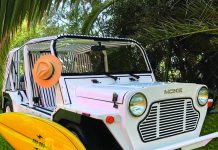In the course of the last two weeks, we have seen two of the worst sailing tragedies ever recorded in the US.
Two weeks ago, five experienced sailors died in the San Francisco/Farallones Island Race, and just last weekend tragedy struck again in our own Newport-to-Ensenada race. Both appear to be freak accidents that affected experienced, well-prepared sailors. Both are also tragedies that have resonated deeply within our sailing community.
** Aegean skipper’s body recovered. Story here. **
In the coming days and weeks, local sailors should expect to see several announcements about investigations and blue ribbon panels looking into the circumstances of these separate incidents. In the future, race organizers should be anticipating the need to take additional steps to reduce the potential for any repeat occurrences of these recent accidents.
At a national level, the Coast Guard and US Sailing are both expected to conduct in-depth investigations into both of these incidents; this is appropriate and should be supported by everyone involved.
To put these two sailing accidents in context with other sports, more sailors have died racing sailboats in 2012 than have died in auto races worldwide in the last 10 years combined (according to Wikipedia, only eight professional drivers have died in auto racing accidents since 2000). Our sport should welcome this scrutiny, and be open-minded about the recommendations that are likely to come out of these investigations.
In the case of the Farallones race, maybe it’s time our sport starts re-thinking how we use obstructions and geographic features as sailing marks. Race organizers could consider setting courses that keep boats away from potentially dangerous lee shores or shoals. Maybe there can be alternate off-set buoys that serve to keep boats safely away from potentially dangerous obstructions or hazards.
There was early speculation that a commercial vessel came into contact with the 37-foot Aegean in the Newport-to-Ensenada race.
While the investigation into the incident continues, it may be worth looking into whether the various tracking systems used to follow boats when they are offshore could be better integrated.
The AIS ship-tracking system is already in place to track all commercial ships over 300 tons off US waters (even relatively small freighters now carry these trackers). Increasingly, GPS tracking technology is getting less expensive and is being used to follow racers in many offshore races, and private tracking firms are readily available for even cruising sailors.
It may be time to start marrying the data in these various tracking systems and sharing information about vessel movements across these platforms.




